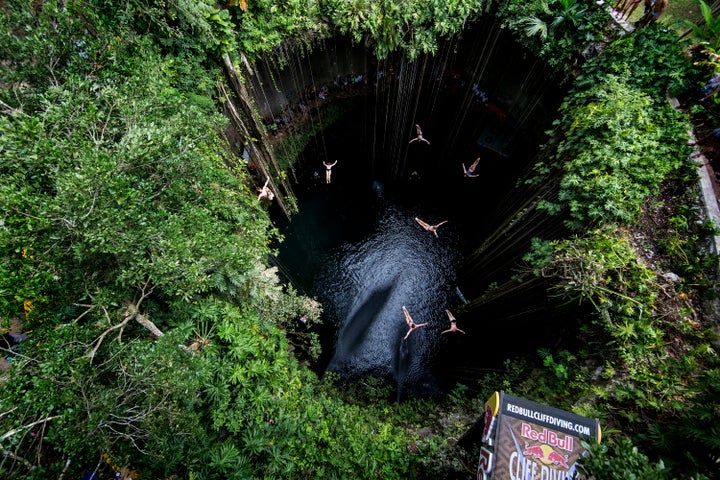When the asteroid which wiped out the dinosaurs struck Earth, the surface of the planet rebounded so fast it formed a mountain higher than Everest in less than 10 minutes.
That’s one of the extraordinary findings of a new study which describes in unprecedented detail the impact the asteroid had on the planet.
Its model for crater formation sheds light on how debris enshrouded the planet in darkness, leading to global cooling and the extinction of several species.

Researchers spent several weeks in early summer drilling through the so-called Chicxulub Crater off the coast of Mexico.
According to their analysis, the devastating asteroid was only 15km-wide but dug a hole in the crust 100km wide and 30km deep.
The roof of the bowl then collapsed, exposing a 200km wide crater which was several kilometres deep.
Finally, the centre of the bowl rebounded to a point higher than the Himalayas, before relaxing and leaving an inner “peak ring” which remains to this day.
Today, the crater is mostly obscured offshore under 600 metres of sediments.
Meanwhile on land, limestone deposit obscures all but the outline of the feature.
In fact, the only remaining visible evidence of the crater is an arc of striking sink holes on Mexico’s Yucatan Peninsula.
Prof Gulick told the BBC’s Science in Action programme: “If this deep-rebound model is correct (it’s called the dynamic collapse model), then our peak ring rocks should be the rocks that have travelled farthest in the impact - first, outwards by kilometres, then up in the air by over 10km, and back down and outwards by another, say, 10km.
“So their total travel path is something like 30km, and they do that in under 10 minutes.”
